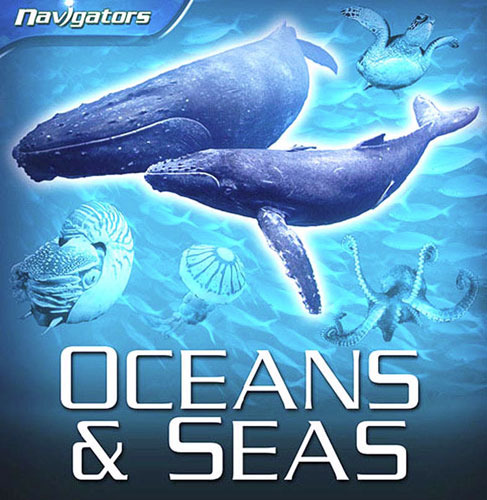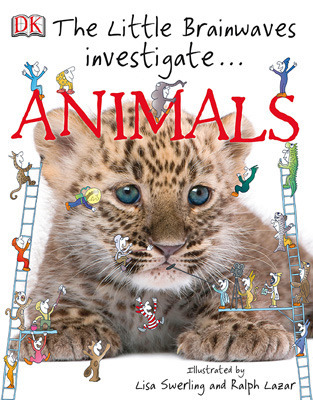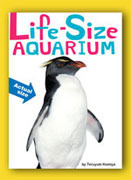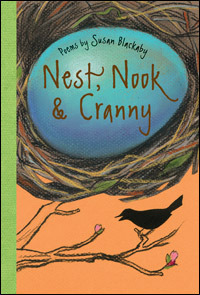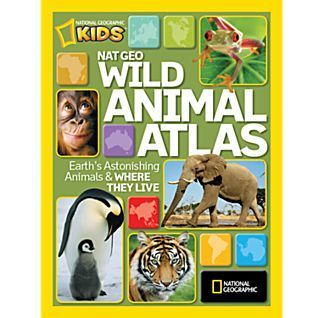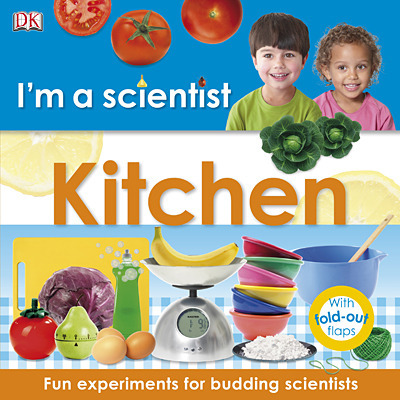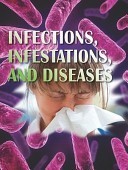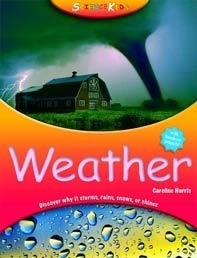Shirley Smith Duke's Blog, page 12
December 29, 2010
Latest Book Deadline Met!
I'm sorry about skipping this week. I just turned in my newest book to Rourke and with holidays, family, and writing, I didn't get to this week's post.
I hope you'll come back next week when I kick of 2011 with a great new book from Lerner. Roberta at Wrapped in Foil has a great review of this one already, but come back to see my take on the fascinating information about one of the remaining great frontiers–the ocean.








December 22, 2010
OCEANS AND SEAS
Oceans & Seas
By Margaret Hynes
Kingfisher, 2010
ISBN #978-0-7534-6415-1
Grades 4 to 7
Nonfiction
"From the seashore to the deepest depths, oceans are home to the most diverse life on Earth. Plants are found only in the sunlit parts of the ocean. Animals are found at all depths, though more than 90 percent of all marine species dwell on the seabed, where a single rock can be home to as many as ten major groups of animals, such as corals, mollusks, and sponges."
In another life I would be a marine biologist and this book confirmed that idea. In the new series, Navigators, Oceans and Seas is an in-depth look at the life in and around the oceans. It defines oceans and seas and provides information about the physical as well as life science of marine environments. Including archaeology, ecology, biomes, coastlines, Pangea, deep-sea exploration and the future of oceans, the layout is filled with facts and visually appealing art, diagrams, and photos.
I had great fun poring over this book and students will, too. The appealing cover holds a sea tortoise, along with colorful fish and a puffin. The art is stunning and catches the reader's interest from the introductory information through the final back matter, which includes a large glossary, index, and final page of investigations.
Aimed at the middle ages, this book should be in every library. It's comprehensive, fits with the science standards, and contains facts in a layout that is reader friendly, allowing the reader to go from cover to cover or select specific topics or sections. It's a gorgeous book and the reasonable price makes it within the reach of library budgets. Take a look at this one. It fills a need for that middle group of readers—interesting and appealing.
Activity 1
Look up waves and study the physics of wave motion. Write a paragraph to explain the energy transfer from the wind to the water. Design a simple wave machine to show the action of waves.
Activity 2
Look up the destructive force of waves. Find two or three ways waves change coastlines and report on them, giving true life examples of their force.
This site has good information about the physics of waves.
This site has some interactive activities on waves.
National Science Standard: motion and forces; transfer of energy
Book provided by publisher.








December 14, 2010
ANIMALS
The Little Brainwaves Investigate…ANIMALS
Illustrated by Lisa Swerling and Ralph Lazar
DK Publishing, 2010
ISBN # 9780756662806
Ages 5-10
Nonfiction
"What is an animal? All living things fall into two main groups. They are either an animal or a plant. They all grow, feed, and have young. But animals can do something plants can't do—they move) or at least most of them can)? Join the little Brainwaves to find out more."
This is a book I wish I'd written. From the beginning, it captures the spirit and joy of learning about animals and reveals the fascinating side of this area of life science.
This series, for younger audiences, follows the Brainwaves series for older kids using the little characters called the Little Brainwaves, a set of helpful guides to direct the reader throughout the book.
The book begins with an introduction to animals, distinguishing vertebrates from invertebrates. It also introduces scientific nomenclature in a simple way. It's divided into clear sections, with small segments of information explained in an easily understandable way. Spreads following further distinguish the animals and their activities, including details about the different groups. It covers life cycles, parents, habits, habitats, and invertebrates. The concluding spread gives interesting facts and a little history about animals and grouping. A detailed glossary and index make up the back matter.
Bright, inviting photos are mixed with the Little Brainwaves guys in an attractive layout. The designer did a wonderful job on this book. It's appealing and bright, friendly and fascinating. It would make a great story time book or would be a good book to book talk. It's a great reference and an even better bargain at a reasonable price for a resource kids will return to again and again.
Activity
Choose an animal from the book. Look up its scientific name. Then create that animal's life cycle in an interesting way, showing the stages it undergoes as it is born, develops, and becomes an adult. Include a timeline in the project. This might be a power point, a chart, or a diorama. Maybe you can create another way to show information about your animal.
For more animal information, see National Geographic's pages.
The Animal Diversity Web has examples of animal life cycles.
Enchanted Learning has good life cycle examples.
This site has a variety of information.
Growing With Science has lots of great life cycle ideas.
National Science Standard: life cycle of animals; organisms and their environment
Book provided by publisher.








December 7, 2010
Life-Size Aquarium
Life-Size Aquarium
By Teruyuki Komiya
Seven Footer Press, 2010
Ages 4-8
Nonfiction
"Amazing! This looks like a piece of floating seaweed, but it is actually a fish related to the seahorse. How do you think the way she looks helps her to protect herself?"
Maybe the fact that I visited the Monterey Bay Aquarium this past September and fell in love with the leafy sea dragons there made me love this book even more, for it begins with the sea weedy fish on the first page. I even bought a leafy sea dragon keychain to add to my Christmas tree decorations.
The first spread is a detailed map of the aquarium along the lines of the first two books in this series, Life-Size Zoo and More Life-Size Zoo. From the leafy sea dragon, adorable penguins, the dugong, and orca, to the sea otter, clownfish, and jellyfish, the book will please its audience and show readers in great detail the actual sized-images of the life found in the Tokyo aquarium.
The photography is exquisite. Look at the glistening drops of water on the otter's fur. Then read the short text giving informative blurbs about that animal. The familiar strip along the side or bottom of the spread adds general information and details about the animal shown.
Back matter on the end pages had size and location of each of the animals listed. The fun of this book, besides the fold-out pages on the big animals, is comparing our familiar animals to the Japanese representatives in the book. This new book with its familiar style makes a fun read every time.
Activity 1
Choose an animal from the book that isn't a common one in the U.S. Look up information about that animal to learn more. Then draw your chosen animal and create labels to show its parts.
Another aquarium in Japan
See fish diagrams here.
Activity 2 (older kids)
Look up information about Glofish. Find out what makes them special.
National Science Standard: organisms in their environment
Book provided by publisher.








November 30, 2010
Nest, Nook, and Cranny
Nest, Nook & Cranny
Poems by Susan Blackaby
Illustrated by Jamie Hogan
Charlesbridge, 2010
ISBN #978-1-58089-350-3
Nonfiction
Grades 3-6
"A doe will pick a thicket
As a place to place her fawn,
Its speckled hide well hidden
In the dappled forest lawn.
A bed safe in the shadows—
Mossy cushion, leafy crest—
A doe will pick a thicket
As a place to make a nest."
This stunning book of poems has it all. "Poetry, animal behavior, ecosystems, habitats, figurative language," says the Charlesbridge site. I agree.
Plus, I'd add mood and voice. And art.
I read Nest, Nook, & Cranny for the science. Open the book and look at the fabulous endpapers. I was hooked before I'd read a word.
But it's so much more than science. The book does an excellent job of fitting each animal within the context of its habitat while using evocative language in a variety of poetry styles. The language within each poem whisks the reader away to that habitat in the imagination.
The charcoal line drawings fit the mood perfectly and rendered the images in a realistic way that suited each poem and introduces each habitat across the spread with simple lines and shading.
Any teacher or librarian could enjoy reading this book to students, and it's a wonderful place to continue either science or poetry activities. Lessons stem naturally from the wealth of carefully researched science information and the back matter, which explains the poetry forms by poem. An introduction tells the reader about the author's inspiration for the book and she introduces her habitat in Beaverton, Oregon.
I loved this book and encourage it as a read-aloud. When time is short, as it often is during the school day, there's not a better way to combine two lovely subjects.
Activity 1
The author describes her habitat. Use figurative language to describe your own habitat.
Activity 2
Look up habitats. Choose a habitat that isn't used in the book. Write the characteristics of that habitat using interesting vocabulary. Include science words, too.
Challenge: Write about the habitat you chose in poetry form. Choose the style you want to use and fit your habitat information into it.
Interview of author and illustrator
See another review at Wrapped in Foil, March 29, 2010
National Science Standard: organisms and environments
Book provided by publisher








November 23, 2010
WILD ANIMAL ATLAS
Wild Animal Atlas
Earth's Astonishing Animals and Where They Live
Priyanka Lamichhane, Project Editor
National Geographic, 2010
Grades K-5
Nonfiction
"North America is 9,449,000 square miles (24,474,000 square kilometers) in area. It is the third largest continent and makes up almost 17 percent of Earth's land area. It stretches from ice caps and tundra in the north to tropical forests in the south with grasslands, wetlands, mountains, and deserts in between. These ecosystems are home to many animals, including this Grizzly Bear trying to catch a salmon in a river in Alaska." A three quarters-sized image of a fish headed straight for a grizzly's open mouth dominates the introduction to North America.
This atlas has it all. Perfect for the elementary ages, the atlas presents its fascinating information by continent and ecosystems. When many states are including more about biomes in their standards, the atlas is right on top of the information. The book begins with the table of contents and a map of the world across the spread depicting the animals on each of the continents. The tiny animals dot the continents with a key for each one. The next spread identifies the animal ecosystems and shows a bright, bold picture for each.
Each continent opens with a gripping photo and a paragraph of information about the continent. The subsequent pages provide the animal information, including habitat, diet, and survival of the group. The National Geographic standard "Facts at a Glance" box gives basic, short information. Two sets of map keys designate animals and habitats.
Filled with fascinating animals and an abundance of information, this book is a winner for me. Every library should have at least one copy of this useful, inexpensive ($18.95) reference book. Kids can spend hours poring over it and it hits the standards for science and social studies both.
Activity
Choose an animal from one of the continents. Look up facts about that animal and list as many ways the animal is adapted to it habitat as you can find.
The National Geographic website is a good place to begin your search.
Here's a fun place to see animal adaptations.
National Science Standard: organisms and their environment
Book provided by publisher for Librarian's Choice Book Review Committee.








November 16, 2010
I'm a Scientist Kitchen
I'm A Scientist Kitchen
By Lisa Burke
DK Publishing, 2010
Nonfiction
Pre-K—2nd grade
"Dear Science Detective,
Let's find out about the world you live in. You can be a great science detective if you look for clues, ask questions, and try to answer them. Carry a notebook to make draings and to write down your thoughts. Have a box for collecting things. This s your world of wonder—the beginning of a lifelong learning journey. Remember: Nothing is too hard for a science detective like you! Lift the Flap on every spread for the Science Stuff. It's the facts behind the fun!"
This book combines science with everyday items generally found in the kitchen and guides the early scientists through basic science principles in fun, easy-to-do experiments. It encourages kids to record data, think about their activity, and ask questions while marveling at the fun they have conducting the experiments.
After the experiments, you can lift the flap and see the science principle behind each activity. The materials are inexpensive and common around most households, making the book parent or teacher friendly while exciting young children about what happens in each experiment and encouraging them to ask why as they learn the reasons behind each activity.
Big, bright photos highlight each experiment that extends across each spread and easily followed directions come with large numbers to guide the process. Pictures illustrate each of the materials and a large photo shows the results. The book sets up the scientific method process in a way that young children can understand and follow without actually using the terms, setting the pattern for future investigations. To see the science behind it all, lift the flap on each spread.
The book includes density, static electricity, engineering, oxidation, magnetism, colloids, insulation and states of matter, proteins, and refraction, all made easy to understand. It has a nice glossary and a shopping list as back matter and the publisher information fills the final cover flap.
I'd say every early childhood classroom and family with preschoolers needs this book. An early introduction to science is a fun way to learn and with the push for the STEM (Science, Technology, Engineering, and Mathematics) subjects, it's a great book to get kids interested in the processes of science and learning.
Activity
Try an experiment from the book. Create a journal of the steps by illustrating each one as the experiment is performed. Use the scientific process to record findings in the journal and what the kids learned.
Here are some more fun experiments.
Use this page to help you show the scientific method.
National Science Standard: abilities necessary to do scientific inquiry; understanding about scientific inquiry
Book provided by publisher.








November 9, 2010
100th Post! Infections, Infestations, and Diseases
Infections, Infestations, and Diseases
By Shirley Duke
Rourke, 2011
Let's Explore Science Series
ISBN #978-1-61590321-4
Grades 4-6
Nonfiction
It's my 100th post and I'm still blogging! All thanks to Anastasia Suen, who told me I should.
"I don't have time to blog." That's what I said. After I took her class and got started, with lots of questions and frustrations, I found I liked having a way to keep a tiny bit of teaching and lots of science in my life. I did it on my own terms, and I kept going, delighted by the wealth of new books that relate to science. Now I'm part of the first round CYBILS panel for nonfiction picture books. I can't wait to blog on many of them.
"Health means being free of disease or pain. Health can refer to the mind, spirit, and body. A body that is healthy can function properly. Muscles, organs, and other systems all work together to help a person live day-to-day life with relative ease. Bodily health is sometimes taken for granted—that is, until someone gets sick. What are the different ways a person can become sick?"
I wrote those words! I still can't believe it. Even as I'm working on two new science books, I have to stop and remember that I'm writing science books—a goal I've desired for a long time.
This book also reminds me why I didn't continue teaching kindergarten. I interned in kindergarten during my master's year, but there was simply too much snot! I moved up through the grade levels as the job allowed, spending time in elementary school, middle school, and then high school. Each grade had its own good things, but through the years I taught mostly science, except for the few years an ESL certification beckoned me into a new district or school.
My two favorite grades were second, with its mellow seven year olds, and my year of sheltered biology. It's amazing how closely science words in Spanish resemble the English words and those students were mostly a delight. I loved writing this book, and actually wrote it before You Can't Wear These Genes, since genetics wasn't my best subject (I became knowledgeable again before writing it!) and I've always loved health.
"Achoo!"
"Where's the Kleenex?"
"I don't feel well."
How many times has a teacher moved back or a mom has hurried to get the thermometer? Or you've checked for nits, worried over vaccines, or stayed up most of the night with a sick child? This book is a starting point for kids interested in what makes you sick or those who are curious about the world and themselves.
The first three chapters address the meaning of the title, covering health and illness, infestations, and then diseases. The next chapter continues with how they are spread, prevention and treatment, and eliminated and emerging diseases. The book addresses current topics like bed bugs, HIV, and the H1N1 flu virus. It has a table of contents, glossary, index, and suggested websites to visit.
Health is important to everyone, and eager young scientists and kids alike should enjoy the fascinating facts in the book. Each book in the series has straightforward science and facts presented in an interesting way to readers. The appeal of each title is evident. The hardest part of talking about these two books? Trying to say them both in one breath!
My scientist blogger friend, Roberta, has a lovely review of my Genes book at her terrific blogs: Wrapped in Foil at and Growing with Science. Be sure to check out her excellent and fun ideas.
Activity 1
Research how to wash hands properly. Create a poster to display the correct techniques and practice singing happy birthday two times to show children how long they should spend scrubbing them.
The CDC has a child-friendly set of directions.
The Mayo clinic has additional information about dos and don'ts for hand washing.
Activity 2 (for older kids)
Look at the comparisons of hands that have been washed or cleaned in various ways. Draw a conclusion about the most sanitary means of cleaning hands and write a paragraph about how to properly wash hands to remove bacteria.
You can find good information and pictures here.
Here you'll find more interesting bacteria and hands information.
National Science Standard: organisms and their environments; develop an understanding of personal health
Book supplied by publisher to author (me!).








November 2, 2010
Writing Retreat
Thank you for stopping by this week. I'm on a writing retreat with my critique group, where I'm working on two new science books. I have a limited internet access, so I decided to save my own book, Infections, Infestations, and Diseases for next week. Please come back then and help me celebrate my 100th post with my own science book and a fresh activity.








October 26, 2010
WEATHER
Weather
By Caroline Harris
Kingfisher, 2006
Science Kids series
(in new series to come titled The Discover Science Series)
ISBN: 978-0-7534-6315-4
Grades 1-4
Nonfiction
"What is weather? Weather is all of the changes that happen in the air. Water, air, and heat from the Sun work together to make weather."
Weather is an appealing 48 page book that defines and explains the phenomena of how forces work on the earth to create weather. It delves into the reasons for weather, the specifics created by the sun, air, and water, and the specific events that occur from these forces. From the sun to the water cycle to weather forecasting, this book has it all—neatly compacted into large type, bold photographs, and short text boxes. New vocabulary is found in the border at the bottom of each page.
The book has an extensive table of contents, an index, and four activities relating to weather. Information beside each photo adds to the body of facts presented. The photos are big and bright, adding an air of accessibility to the information. The tornado on the front cover is sure to attract readers, but the facts will keep them reading. I especially liked the activities at the back.
This book is part of Science Kids series, but will be included in the newer Discover Science Series from this publisher. I found the information about it in the current series list on Kingfisher.
Activity
Choose one aspect of weather to follow for two weeks (temperature, humidity, highest wind speed). Create a chart to record your information—maybe a classroom chart or one posted at home. After two weeks, record the data on a line graph to show the changes occurring over time. Look for any trend and write a paragraph summarizing the data from the chart.
This site will give you the graph grid.
This site shows you how to create your own graph.
National science standard: understanding science inquiry; changes in earth and sky








Shirley Smith Duke's Blog


